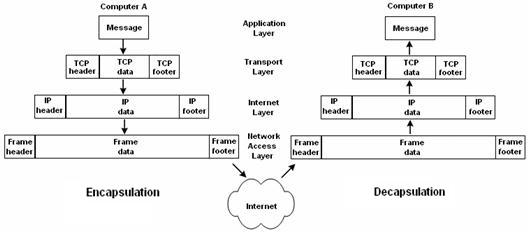Imagine sending a confidential letter in the mail. You wouldn’t just write it on a postcard for everyone to see, would you? In the digital world, encapsulation serves a similar purpose in networking. It’s like a multi-layered envelope system, ensuring that data travels securely and efficiently across networks. This process, fundamental to how information is transmitted and received in the digital realm, involves a lower-layer protocol wrapping data from a higher-layer protocol in its own format, much like placing a letter in an envelope.
In this article, we’ll dive into the intricacies of encapsulation in networking, unraveling its importance, how it works, and why it’s crucial for maintaining the integrity and structure of data communication. Whether you’re a networking novice or a seasoned professional, understanding encapsulation is key to grasping the complexities of network communication.
What is Encapsulation (in networking)?
Generally, Encapsulation is a process by which a lower-layer protocol receives data from a higher-layer protocol and then places the data into the data portion of its frame. Thus, encapsulation is the process of enclosing one type of packet using another type of packet.
Encapsulation at the lowest levels of the Open Systems Interconnection (OSI) reference model is sometimes referred to as framing.
Examples:
- An Ethernet frame that encapsulates an Internet Protocol (IP) packet, which itself encapsulates a Transmission Control Protocol (TCP) packet, which then encapsulates the actual data being transmitted over the network
- An Ethernet frame encapsulated in an Asynchronous Transfer Mode (ATM) frame for transmission over an ATM backbone

The data-link layer (layer 2) of the OSI model for networking is responsible for encapsulation or framing of data for transmission over the physical medium. In local area network (LAN) technologies, this is usually Carrier Sense Multiple Access with Collision Detection (CSMA/CD) for Ethernet networks. For wide area network (WAN) technologies, the data-link protocols used depend on whether the communications are point-to-point or multipoint:
- For point-to-point communications, possible WAN data-link protocols include Point-to-Point Protocol (PPP) and High-level Data Link Control (HDLC) protocol.
- For multipoint communications, possible WAN data-link protocols include frame relay, ATM, Switched Multimegabit Data Services (SMDS), and X.25.